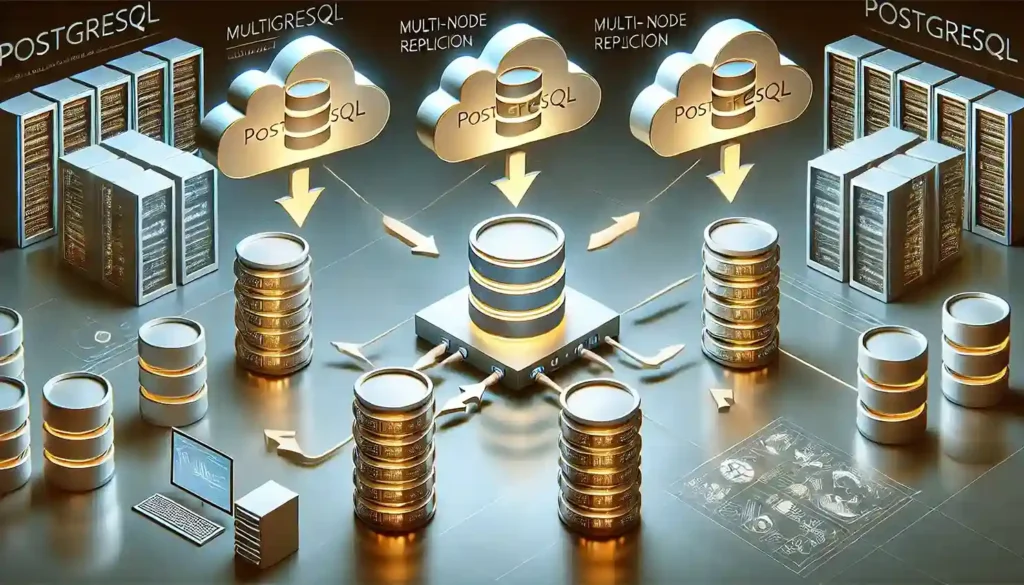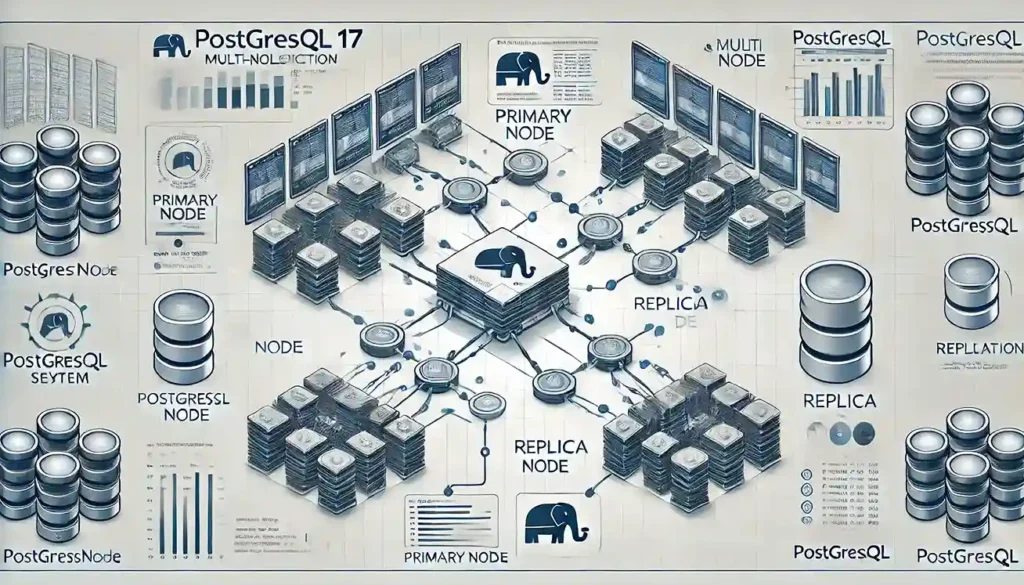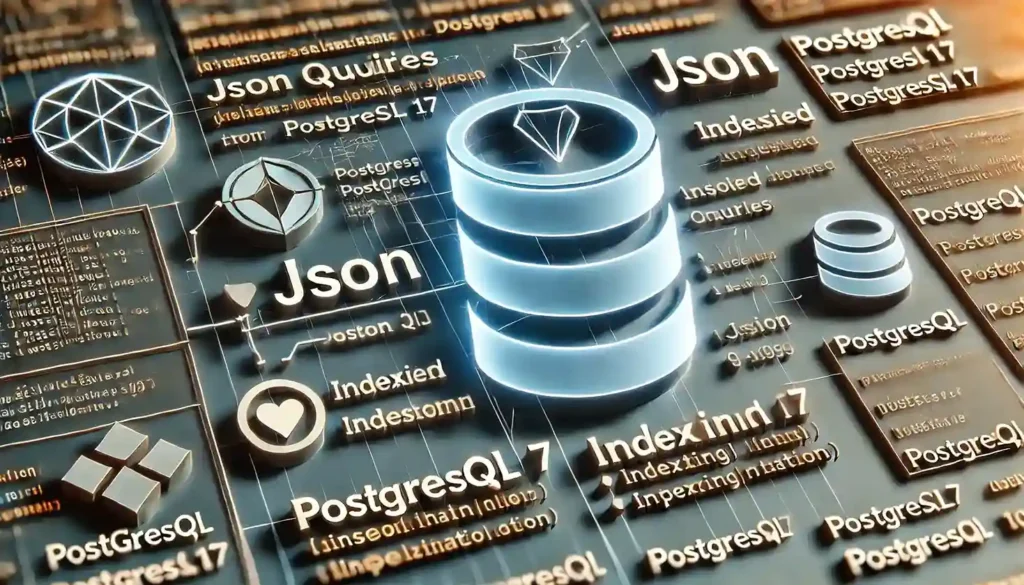PostgreSQL 17, one of the most effective open-source relational database management systems (RDBMS), offers a range of features designed to enhance system performance, scalability, and ease of use. Among the standout improvements are enhanced replication capabilities and more effective management of JSON data types through JSON plateaux.
This article will reflect upon the face-lift within the enhanced image tools and improved JSON flats functionalities that PostgreSQL 17 offers to its users, making it the most modern open-source database answer.”
Let’s cut the chase!
Understanding Doppelganger in Database Management

Imitation comprises an important feature of contemporary database administration. It involves filling the documents of one data in another database and brings forth several major tasks:
Data Availability
Ensures that data remains un-captive even with the possibility of losing hardware or mishandling it.
Load Balancing
Distributes query loads across multiple nodes, thereby enhancing commission and responsiveness.
Disaster Recovery
Provides blockades that are operable for further assistance in restoring lost data. PostgreSQL has had really strong point-in-time replication features, but since the launch of PostgreSQL 17, there have been many strong strides it has taken in replication capabilities.
Analytical Image Improvements
One of the most interesting features PostgreSQL 17 has added is an analytical image-an image stored against a discrete data capture such that users can even imitate pure flats or individual rows within a plain. This is especially advantageous for companies that possibly wish only to copy certain subsets of their data.
Excellent Power
The new features facilitate enhanced selection of image sets. This granularity allows the company to save bandwidth and processing resources, as the entire database does not need to be copied when only specific data is supplied.
Real-Time Data Sync
The advancement in logical partner will enable near-real-time synchronization of main and photograph databases, making it useful for applications that require current news.
Regular Improvements
Routine maintenance is very important for any database configuration, and PostgreSQL 17 has provided a variety of modifications that ensure improved look-alike speed and reliability.
Optimize Streaming
Together with the asynchronous simulation process, negligible latency and superior synchronization speed are maintained; this is particularly useful for global databases, where indecision would really hurt the process.
Efficient Brawl Management
This is a better approach to conflict detection and resolution for duplicates. Thus, in case of combined changes on the primary and replica nodes, PostgreSQL would now resolve such conflicts much better and maintain data integrity.

Multi-Node Support
Multi-node replication configurations are extended by PostgreSQL 17 under these new functions.
Multi-Source Replication
Users can then copy data from many source databases, all primary, to a single mark database. Ideal for companies running hybrid clouds or intending to consolidate data from many origins into a warehouse.
Horizontal Scaling
With multi-node support, the players will be able to horizontally scale their databases through load distributing over several replicas. A particularly important scalability feature in applications experiencing changes or problems in congestion.
Overview of JSON Data Types
Conversely, the JSON or Joint Present Object Notation has fast grown in the model of the data business, with reckless speed in web applications and APIs. Its attribute of portraying complexity in data systems has made it one of the preferred forms for most designers. Despite the numerous performances that PostgreSQL has executed with the JSON data types, PostgreSQL 17 takes the state-of-the-art step with the improved JSON table parts.

Why JSON is Required
- Flexible Schema: JSON allows a developer to work with an amorphous data model that is benched in a traditional relational database schema.
- This freedom goes well with the various applications, as the need for information tends to change over time.
- Nested Data structures JSON can give a pretty easy way to encode and access complex hierarchical data, making it very useful for applications that involve marketing with various databases.
JSONB modifications
- One of the most important advancements in PostgreSQL 17 is clicking JSONB (binary JSON). Optimizations in this version improve JSONB performance and usability.
- Faster Querying Routine: PostgreSQL 17 introduces new indexing methods for JSONB data. With more reasonable indices, designers can answer complex questions about JSON data more efficiently, thus significantly reducing query times and improving application versions.
- Memory Efficiency: These optimizations also improve memory efficiency, enabling the storing of greater amounts of JSON data without sacrificing performance.
Table Functions for JSON
- Use JSON Table Functions of PostgreSQL 17 for querying and using JSON data like with any other regular relational table.
- Go for an Integrated Solution This will help the designers to query the JSON data, extract fields from it, and join them with different tables. This will give freedom to perform complicated manipulations without converting the JSON data into a concrete relational form.
- Case Scenarios The usefulness of this functionality shines in such systems where applications need to merge structured and amorphous data. For instance, in a retail application, customer data is in fixed tables, while marketing logs are held in JSON format. This can greatly boost reporting and analytics power by allowing seamless queries of the two.
Indexing Innovations for JSON
- These are indexing enhancements to PostgreSQL 17 but specifically to JSON data.
- GIN and b-tree indexing: More effective Generalized Inverted Indexes (GINs) and B-tree indexing on JSON fields permit developers to ensure faster query on JSON data. It matters mostly in applications where speed is a critical issue of data recovery.
- Partial Indexing So that even more splendor comes into play here-with the ability to create partial indexes on specific JSON keys,

Global Applications and Use Cases
Beyond academic papers, PostgreSQL 17 features considerably benefit real companies and designers. Some illustrations of how these parts apply are:
E-Commerce Media
Typically, a shopper will have customer information and sales transactions stored in structured tables. Then there would be the library catalogs and lists produced by users, which would all be in JSON format. The new improved JSON in PostgreSQL 17 will allow supervision and complex queries between the structured and unstructured data.
Analytics and Reporting
Without resident capabilities to store and query JSON data, any organization that relies on analytics will be obsolete soon. Data reviewers in PostgreSQL 17 can now combine JSON with normal tables, resulting in a synthesis that spans across many different databases.
Mixed Replica Environments
Multi-node replication of PostgreSQL 17 will provide supplementary facilities for companies using hybrid cloud settings. Replication of data across various cloud environments enables the company to have robust availability and high commission, even in a dispersed system.”,”IoT Applications.
PostgreSQL 17 will prepare the ground for the data these IoT applications often churn out in excess volumes and will provide developers with the necessary JSON qualifications to store, query, and analyze the data effectively, obtaining business-driving insight to operational benefits.
Conclusion
PostgreSQL 17 will be one of the great improvements in the extension of the open-source database. The advancements towards pure elements of counterpart and JSON will cope with the increasing demand of contemporary applications for engineers to build scalable, flexible, and high-performance solutions.
The enhanced logical image, multi-node support, and progressive JSON capabilities take PostgreSQL beyond its previous strength and enable communities to leverage the power of data like never before. Be it e-commerce platforms, or analytics tools, or any form of IoT applications, PostgreSQL 17 provides you that framework which is necessary to prosper within today’s data-obsessive terrain.
PostgreSQL 17 is the one reliable option; as communities increasingly face the complexities of data governance, open-source database solutions continue to innovate. This will soon unleash the future of database capabilities for companies.
FAQs
- What new features are introduced into replication in PostgreSQL 17?
More improvements in logical replication from PostgreSQL 17: real-time sync, multi-node support and better conflict resolution built in.
- In what way is PostgreSQL 17 enhancing JSON handling capabilities?
Improve the performance of JSONB and speed up the operation while achieving better memory efficiency in querying JSON. JSON can be queried as relational tables.
- What replicated systems then in PostgreSQL 17 are multi-node replication?
This improves the data spanning along the horizontal direction with two other benefits: increasing data availability and supporting replication from more than one source.
- In what ways can PostgreSQL 17 come in handy for e-commerce and IoT applications?
It also enhances the ability to perform seamless queries between structured and unstructured data, which is essential in real-time applications to manage massive, complex datasets.




